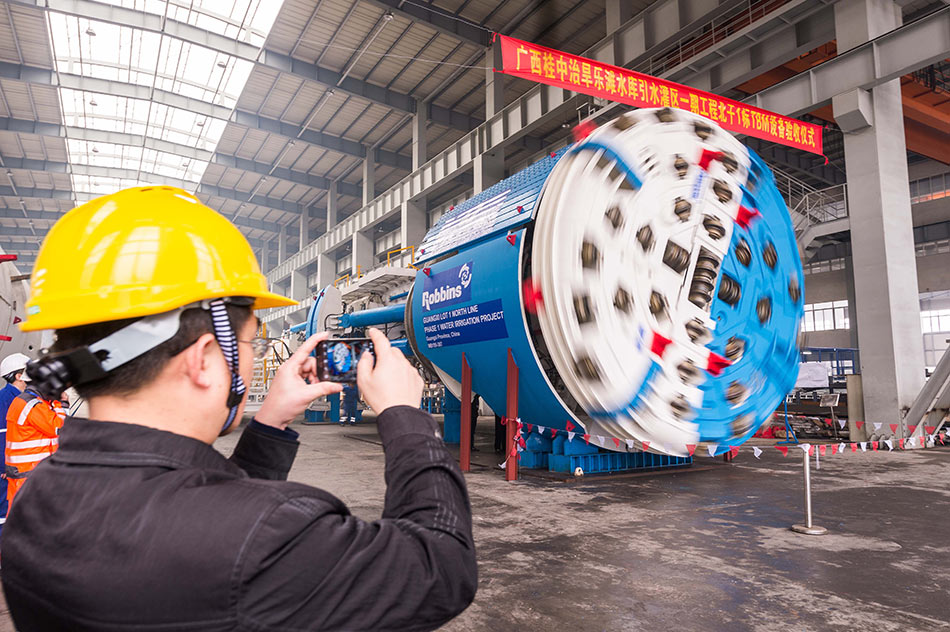Breakthrough after tough drive in China 05 Mar 2020
In January 2020, a Robbins 5.97m (19.6ft) diameter main beam TBM cleared its final hurdle when it broke through in Guangxi Province, China. The TBM has excavated its first of two tunnels, an 11.9km (7.4 mile) long conduit for Lot1 of the North Line Water Irrigation Project, Letan Water Reservoir, Drought-Relief.
The TBM encountered challenges, from karst cavities to fault zones and water inflows. The workers on the job site, contractor Guangdong No 2 Hydropower Bureau, and the owner, Construction Management Bureau for the Letan Water Reservoir, had much to celebrate after completion of what is regarded as the most complex and longest drive on the North Line project. Boring with the Robbins main beam TBM and supported by a continuous conveyor muck haulage system began in Summer 2015.
“There was no precedent in this Province for using a main beam TBM to excavate tunnels longer than 10km,” said Yongjiu Jin, Deputy Manager of contractor Guangdong. “We did not have relevant local experience to use for reference.” Despite a number of difficult geological obstacles in the limestone rock, the TBM was still able to achieve advance rates of up to 40m (130ft) per day in good ground.
Much of the geology consisted of lightly weathered limestone in rock Classes II to III, with some sections in Classes IV to V that required the heaviest amount of ground support, ranging from rock bolts to ring beams and mesh.
“Our team encountered a coal seam, gasses, two large water inrushes, three fault zones up to 103m long, 11 karst cavities, and more,” said Yongjiu. “To solve the ground problems, more than 160 special technical research meetings were held.”
“Robbins personnel provided good technical support, from equipment installation and commissioning to tunnel completion, and were on-hand throughout the project offering on site assistance,” Yongjiu added.
While the completion of the first tunnel, thought to be the longest single-heading construction on record for water tunnels in Guangxi, is a milestone, there is more to do. The Robbins machine will be inspected and relaunched to bore a second 4.2km (2.6 miles) drive. The ground conditions are predicted to be equally challenging, but the tunneling operation will be guided by ground prediction methodology.
Tunnel reflection tomography (TRT), consisting of ground prediction using seismic waves, is being used to detect changing conditions ahead of the TBM. The method can predict the distribution and scale of joints and fissures, enabling the crew to plan ahead.
Located near Laibin City, the North Line project provides much needed drought relief through a network totaling 29.4km (18.3 miles).
“This tunnel will realise the dream of drought-control that people in Central Guangxi have had for many years,” said Yongjiu. “The breakthrough is the most important milestone event in this first phase of the North Line project.”
References
- TBM ready for Mill Creek dual-diameter drive – TunnelTalk, January 2020
- All done after tough drive in Atlanta – TunnelTalk, October 2018
|
|
|
|
|
Add your comment
- Thank you for taking the time to share your thoughts and comments. You share in the wider tunnelling community, so please keep your comments smart and civil. Don't attack other readers personally, and keep your language professional.





